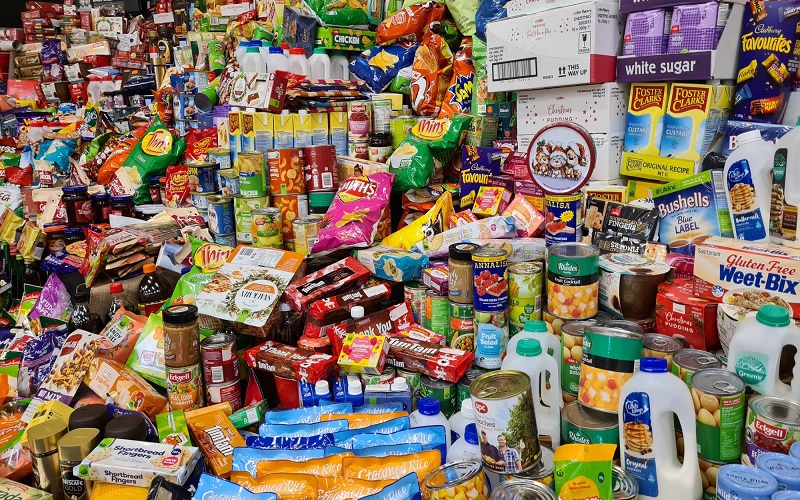
What innovations are being explored inside the world of flexible packaging material manufacturing?
Flexible packaging materials are now widely used in consumer items, food packaging, and other areas of daily life. Manufacturers are investigating new ideas to enhance the materials, production methods, and sustainability of flexible packaging in response to the growing demand for this type of packaging. This article examines some of the most significant developments in the flexible packaging sector.
Developments in Material Formulation
flexible packaging material manufacturer are always developing novel material compositions to enhance utility and performance while lessening their environmental effects. Using more recycled and renewable materials in packaging films and laminates is one area of focus. Several producers have switched from using polymers derived from petroleum to packaging films manufactured completely of renewable resources, such as plants. Others are working with materials that are hybrids, meaning they combine renewable elements with some amount of recycled plastic.
Manufacturers are also able to improve material qualities at the microscopic level thanks to the application of nanotechnology. To improve barrier qualities, increase shelf life, and improve printability and convertibility, packaging films and coatings are being supplemented with nanomaterials. Additionally, antibacterial qualities that support the preservation of product freshness are being added to nanocoatings.
Developments in Production Technologies
The industrial methods for creating flexible packaging are likewise developing quickly. A lot of manufacturers have made investments in new printing technologies that enable more flexible print capabilities, customized packaging, and improved visuals. For applications needing short runs, customization, and versioning, digital printing technologies such as inkjet are becoming more and more prevalent. When compared to conventional flexographic printing, these printing techniques generate less waste.
Additionally, robotics and automation are being included in the production process. Applications such as palletizing finished goods, assembling packages, and attaching labels are being assisted by robotic arms. It enhances production uniformity and speeds while lowering the requirement for labor. Certain manufacturers have even created completely automated packaging lines that transform raw materials into final packages with very little assistance from humans.
Innovations in Sustainable Packaging
In the flexible packaging sector, sustainability is still a key factor driving innovation. Producers are concentrating on creating packaging solutions that utilize less material, are optimized for recycling, and use recycled and renewable materials. Lightweight packaging films and laminates, the creation of mono-material structures for better recycling, and the introduction of widely recyclable closing methods are a few examples.
Technologies for recycling after consumption are also developing. More flexible packaging is being collected and repurposed from recycling streams thanks to new sorting and cleaning techniques. Additionally, end-of-life options that break down packaging into its molecular components for reuse—chemical recycling technologies—are being investigated. The ultimate objective is to create a real circular economy for flexible packaging, one in which materials are continuously reused.
Novelties in Package Design
manufacturing flexible packaging collaborates closely with brand owners to develop cutting-edge package designs that maximize material utilization and improve the customer and retail experiences. Personalized products can be customized by customers through interactive and adjustable packaging, for example. To increase convenience and cut down on waste from extra closure components, recloseable features are also being incorporated straight into package films.
Also on the rise are packaging solutions that are linked and intelligent. To check product freshness, give usage instructions, and communicate with customers through their mobile devices, the packaging is now being produced with sensors, indications, and even integrated electronics. With the use of clever packaging, food waste can be decreased, brand engagement can be increased, and product safety may be enhanced.
Just a small portion of the fascinating advancements taking place in the flexible packaging sector are represented by the innovations covered here. Flexible packaging producers will keep investigating novel materials, production techniques, design approaches, and business strategies in response to growing consumer demands and sustainability concerns. The objective is to provide flexible packaging that is high-performing, easy to use, and environmentally friendly to the world market. Flexible packaging materials are going to be a valuable and adaptable packaging format as long as innovation in the field continues.
Developments in Digital Technologies
Flexpack producers are using new digital technologies to enhance customer experiences and business operations in addition to improvements in materials and production methods. Improvements in personalization, versioning, and traceability are possible with advanced digital printing capabilities. New potential for consumer involvement and marketing campaigns is created by the ability to digitally print packaging on demand with variable or adjustable visuals.
Moreover, real-time packaging tracking across the supply chain is made possible by integrated digital technology. To provide unique identification for every item, chips or tags can be printed or inserted directly onto packaging films. From manufacture through to the final user, this digital identity stays with the package. Traceability, authenticity verification, and interactive customer experiences are made possible by technologies such as RFID, NFC, and QR codes. The whole lifecycle of their products is visible to brand owners.
Upgrading the packaging value chain is another benefit of the data these digital IDs are capturing. Companies are optimizing workflows, cutting waste, and promptly resolving supply chain problems by employing analytics from real-time manufacturing and distribution data.
Virtual testing of flexible packaging concepts before the physical prototype is also made possible by digital twins and simulation technology. To maximize performance, sustainability, and cost-effectiveness, businesses can assess various material compositions, package arrangements, and production methods using computer models. Rather than in the middle of production or delivery, such problems can be found and fixed during the design phase.
Opportunities for intelligent, data-driven, interactive, and flexible packaging solutions will increase as digital technologies develop. To improve communication between stakeholders throughout the value chain, manufacturers will create new digital business models and platforms. Additional advancements in fields like automated quality control, predictive analytics, individualized experiences, and circular economy systems will be fueled by the digital revolution. When it comes to these technological developments, flexible packaging is positioned to lead.You can now browse and buy a wide variety of food packaging containers online.
Conclusion
To stay up with changing consumer demands, the flexible packaging sector has shown incredible creativity. Innovations in digital capabilities, design solutions, production technology, and new materials will keep changing the industry. As producers create completely carbon-neutral and circular packaging, sustainability will continue to be a major focus. With continued development, flexible packaging will be able to market and preserve goods securely for a long time to come.


